Big Picture Yearly Homeschool Planning – 2020-2021
Big picture yearly homeschool planning is going to be the next stop for our planning for the new homeschool year. You want to know now if your plans are going to be too much for your homeschool year. That is why we start with big picture yearly homeschool planning. Understanding your vision, and then being realistic about your time commitments.
When you look at big picture yearly homeschool planning you are thinking about two different things.
- The vision and goals for your homeschool year.
- The more practical “what will my year look like?” questions.
Big Picture Yearly Homeschool Planning: Days Off
When you start thinking about your new homeschool year, you will want to first mark off the days that you most definitely will not do school. It may seem odd to start with how many days off instead of which days you will be actively doing school. But, when you are doing big picture yearly homeschool planning, you want to make sure that you have a handle on when you most definitely will not be doing school.
The easy days are holidays. Which holidays do you observe and plan to take time off from? This can be anything from Christmas and Easter, to birthdays.
In my family, we take off the week of each child’s birthday. Is that necessary? No, absolutely not. And my husband actually thinks I am crazy for it. However, growing up, my birthday always fell during our spring vacation week, and my brother’s birthday was over the summer, it seemed normal to me. So, we take off birthdays.
We also take a larger break between Thanksgiving and New Year’s. If you watched my video on year-round homeschooling, you will know that we take breaks when we need them and try to do school *most* days.
Erin Condren Teacher Lesson Planner
This post includes affiliate links. If you click on one of these links and make a subsequent purchase I may receive a commission. Read Disclosure.
Big picture yearly homeschool planning will involve the mini-calendars overview pages in the Erin Condren Teacher Lesson Planner. It will also include the monthly spreads.
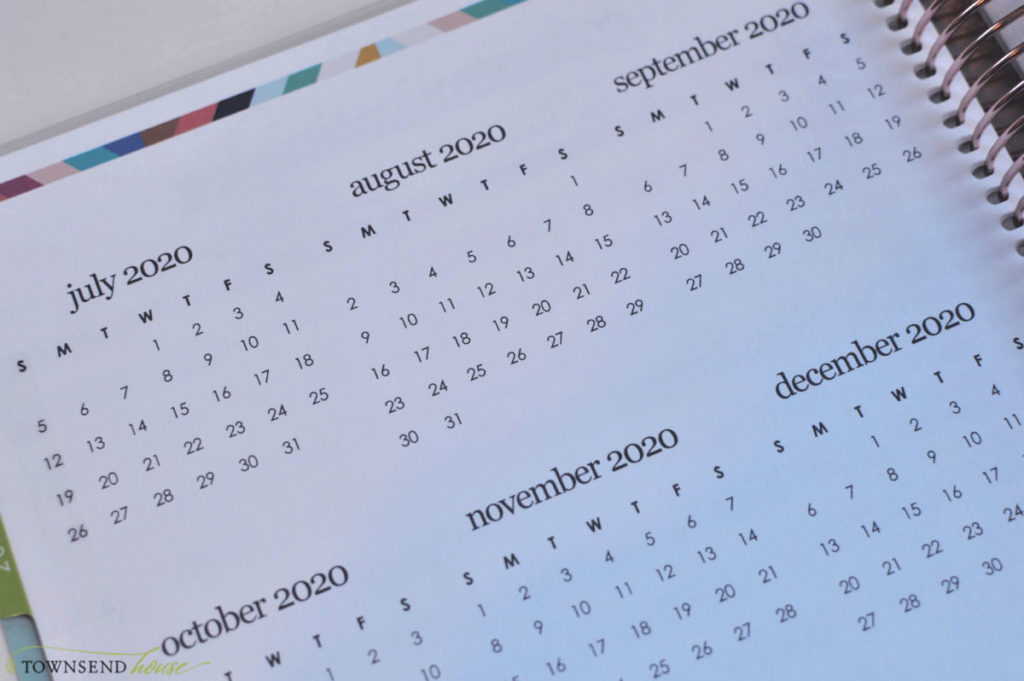
The first thing to do is to look at the layout of mini monthly calendars. What are the days off that you know of? Christmas is always December 25th, and most likely you won’t be doing homeschool that day, so take a pencil and put a box around that date. Do the same for birthdays and other holidays that you know you will not “do school.”
I always start in pencil, but then I use the transparent dot stickers to mark off the holidays and birthdays. I like to color code, so this works well for me, but you can use a pencil or pen or whatever you want to mark the days that you will have off.
Monthly Calendar Spreads
After you mark off which days you definitely want to take off for your homeschool year, you will want to mark those days in your monthly calendar. Erin Condren makes tracking holidays easy by including three pages of holiday stickers in the Erin Condren Teacher Lesson Planner.
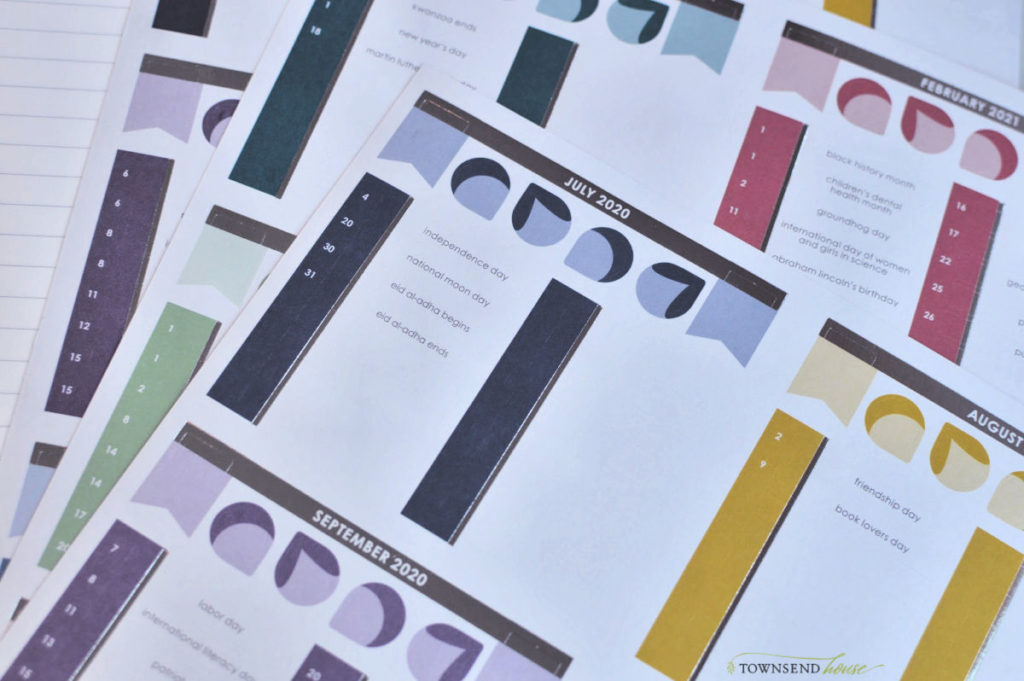
All you need to do is go through and put those stickers on your monthly layouts. Then you will have those days holidays marked before your school year begins.
I do not do anything besides marking holidays in the monthly spreads before the month actually starts. Instead, I keep it all on my year-at-a-glance spread.
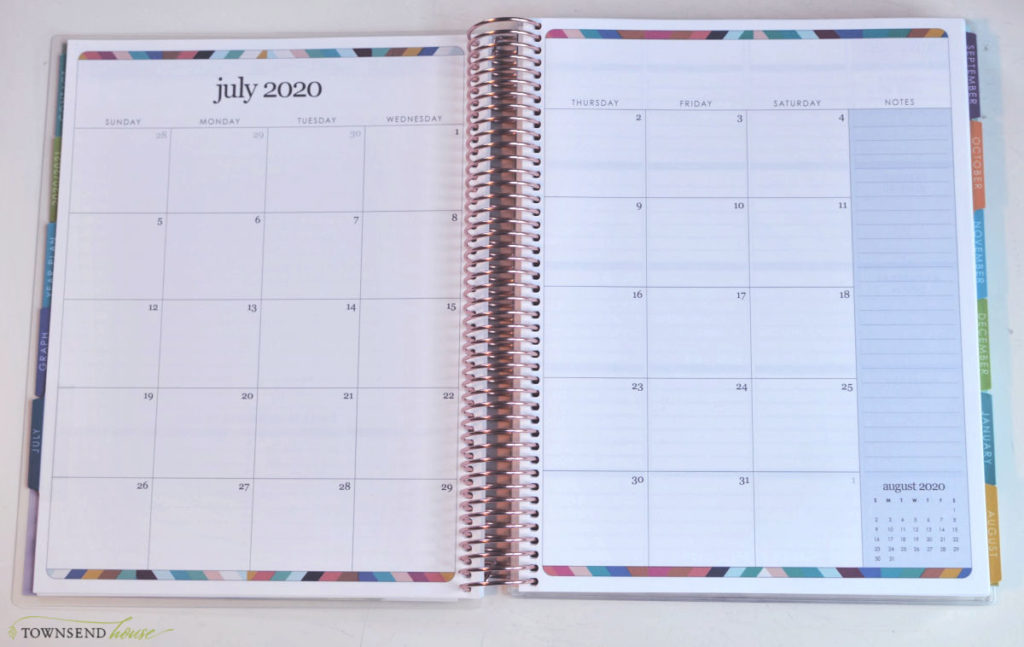
Big Picture Yearly Homeschool Planning: School Days Needed
Part of why I love the mini monthly calendar spread in this lesson planner is because I can also see how many days of school we will be doing each month.
In Maine, we are required to do 175 days of school. That works out to about 15 days of school each month. Because we practice year-round homeschooling, I am able to look at the breaks and holidays that we have planned and see how many days of school we are expected to do each month. Some months the number is higher than in other months.
When we take our big break for Christmas, we still do some school, but not the regular book learning. So we still are able to have about 10 days of school in December. That means that in another month I am going to have to make up those 5 days that we are not doing school. Usually, this is quite easy because there are several months that we do at least 20 days of school.
If you are in a state that does not require a specific number of school days, you will still want to pick a number for your family. Then stick to it. If you do not start out by picking a number of school days, you will end up either short-changing your school year or feeling rushed towards the end of the year because you won’t have finished all of your resources.
Join the Townsend House Community to receive the tools you need to Cultivate Simplicity in your Home & Homeschool
How many days to Complete your Resources
Most homeschool curricula will have a specific number of days associated with each resource. When you start to do your big picture yearly homeschool planning, knowing how many days your resources require is going to be a big help. Will you be able to complete the resources in the number of days you have allocated yourself? Or will it be a struggle to push through?
Is it realistic to plan for multiple subjects every single day, for 180 days? Maybe it is in your homeschool, but make sure you ask yourself that question.
You want to make sure that you build in margin so that you are not stressed out about not completing what needs to be done. That is part of the reason we are starting our homeschool planning with marking days off. This will give you a good idea of how much time you really have for completing your homeschool curriculum resources.
Big Picture Yearly Homeschool Planning: Vision
Once you have your days marked off the next step is to start thinking about your homeschool vision for the year. This is a good activity to do with your kids once you have your own vision laid out. Now, you can have an overall vision for all of your homeschool years, that is something like a mission statement or statement of education for your individual homeschool. But, for today we will be discussing a yearly vision for your homeschool.
This is the time to pull out your homeschool year wrap-up questions and answers. You want to explore what went well, and what you want to improve on for the coming homeschool year.
Creating a vision can be as creative as you want it to be. It can be simple, just a few sentences to explain what you hope to accomplish in the homeschool year. Or, it can be a big, bright, colorful vision board that you have to look at throughout your homeschool year to keep you motivated.
I like to do both. A vision statement, as well as a vision board.
Crafting your Vision
You want to look at all of your resources, is there a focus that you have for the year? Do you want to spend more time outside exploring? Are there subjects that are outside the box you want to focus on? Will you look to different educational methods this year? What is your motivation for the year ahead?
Big Picture Yearly Homeschool Planning: Goals
Once you have your vision for the year it will be easier to drill down on the specific goals you have for the homeschool year ahead. It is good to think of goals for yourself, as well as goals for your kids.
Is there a particular subject that one of your kids has struggled with? Do you want to focus on that? Or is there something that your kids are really excited about learning and you want to make sure you incorporate that into the homeschool year?
Make a List
The easiest way I have found to narrow down homeschool goals is to make a list. Write out all the things that you want your kids to accomplish, and all the things that you want to accomplish in your homeschool. It can be anything from “more movement during the day.” To something like “concentrate on spelling rules” or “memorize math facts.”
Write it all down. The list may be long, that is OK. But, you will need to pare down the list. So, once you have your list, look at everything and rank it. Part of big picture yearly homeschool planning is having the ability to pare down. Remember, you will not be able to complete ALL of your goals for your child’s entire homeschool career this year. Instead, focus on the most important items, and put the others to the side.
It doesn’t mean that if your child easily memorizes all of their math facts in the first 6 weeks of school that you can’t also add in spelling rules. Instead, you will have a ranked list of goals, and work on as many as you think would work for your family.
A good frame of mind is to set aside 1-2 educational goals per quarter. This will give you time to work on those most important things while also keeping up with all the other work your child needs to do on a regular basis.
How does Big Picture Yearly Homeschool Planning Cultivate Simplicity?
Big picture yearly homeschool planning cultivates simplicity by giving you a direction. When you are planning out your months and weeks and days you need to know what your big, overarching goals are. What is the vision of your homeschool for the year? Unless you have a good understanding of where you want to be, and where you want your kids to be, at the end of the next homeschool year, it will be a struggle to make sure you accomplish all of that.
It takes pressure off of you in the long-run. You have already mapped out what you need to work on for the year. Margin has been included in your big yearly schedule. You have your breaks already mapped out. This means that you won’t feel the need to rush.
Yes, there will always be small hiccups, but if you are realistic about the goals and vision you have set for the year, it will take a lot of the pressure off of you.
The Bottom Line
Big picture yearly homeschool planning is just the start of homeschool planning for the year. But, it is one of the most important things. It will allow you to switch resources if you realize something isn’t working for your kids. And it will also give you a sense of understanding of where you want to be at the end of the year.
This is better than looking at all of your curricula and saying “the goal is to finish all of this curricula by the end of the year.” That doesn’t allow enough flexibility and doesn’t give you a why behind your goals for your kids.
This doesn’t have to take an immense amount of time, but sit down, write out the days you know you will be taking off from school. Figure out how many days of school you will be able to do each month. Write out your vision for your homeschool year. Write out a couple of goals for your kids, and for you.
What is your vision for the new homeschool year? Do you have an idea of the types of goals you have for your kids?
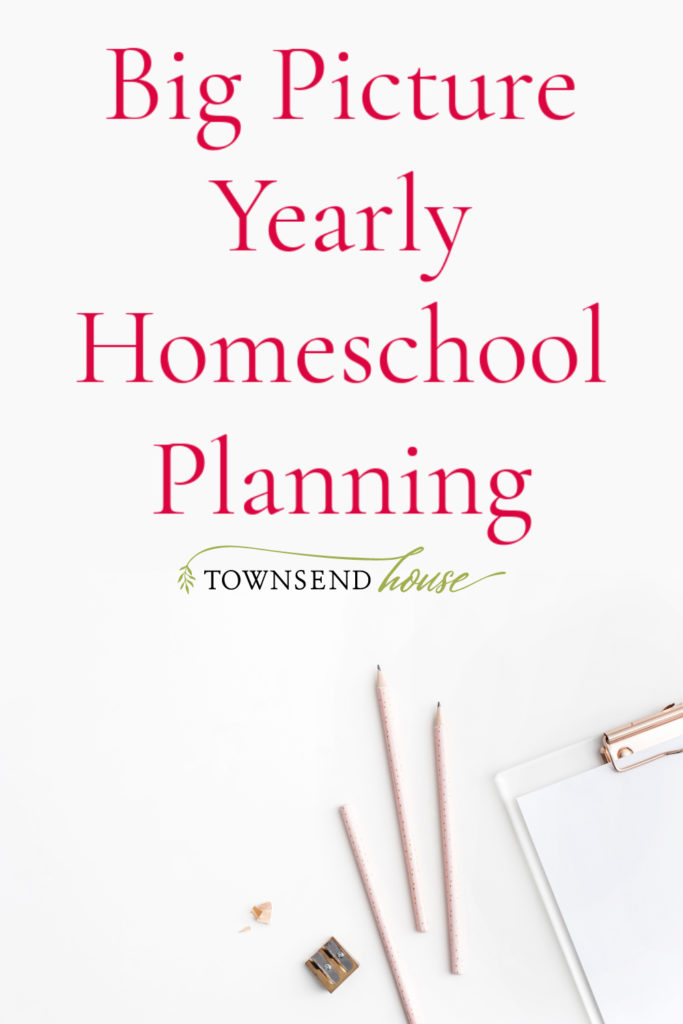


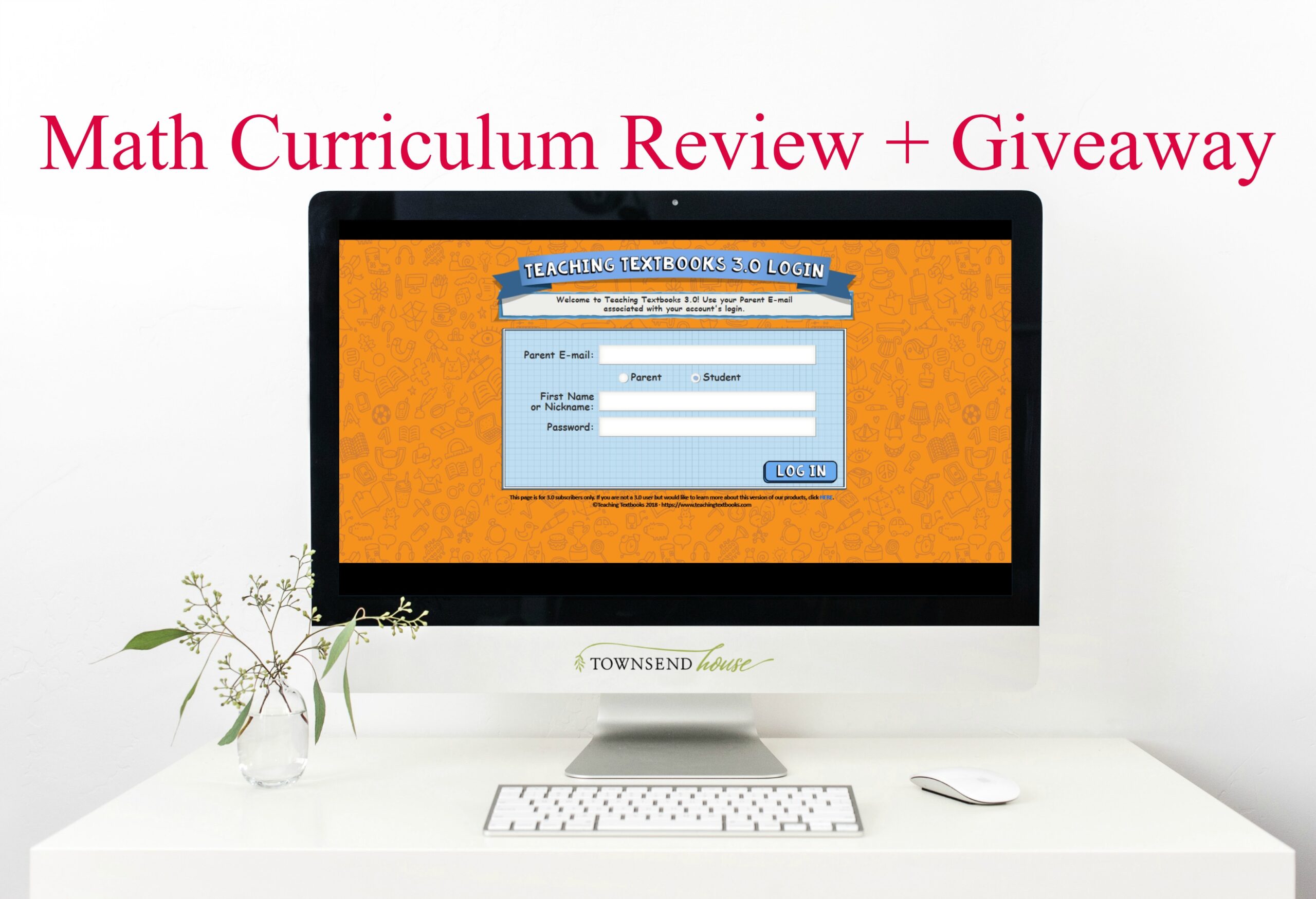


This is such a well thought out article – really makes a strong argument for year-round homeschooling. I totally agree that learning takes place in many more ways than we tend to think about. Thanks for sharing!